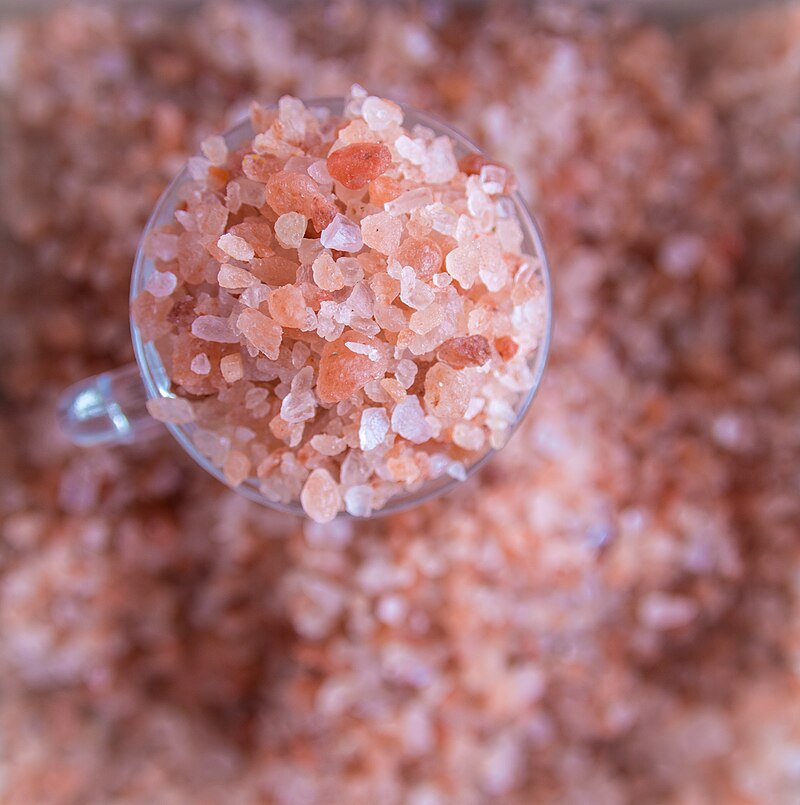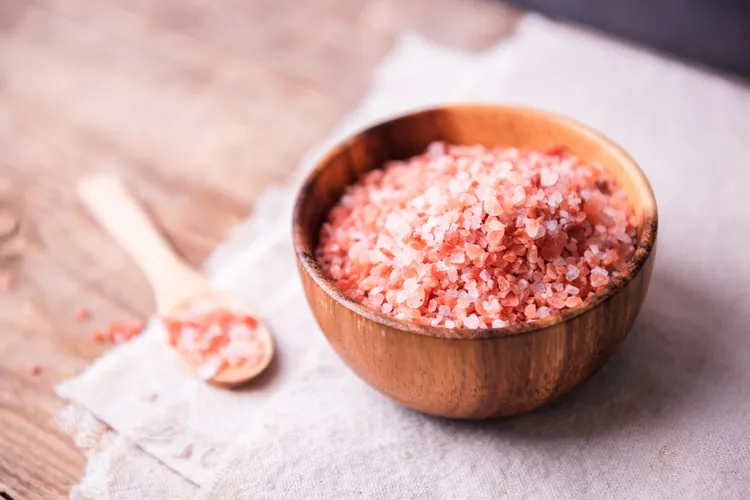Pink Himalayan Salt: What Are the Real Benefits?
You’ve likely seen it everywhere, from gourmet kitchens to wellness spas. Pink Himalayan salt, with its beautiful rosy hue, has become a staple for many. But what’s the story behind this popular mineral? Is it truly better for you than regular table salt, or is its reputation built more on myth than merit?
This guide will dig into the facts. We’ll explore where pink salt comes from, what gives it its color, and how it stacks up against other salts. You will learn about its uses in cooking, its role in popular wellness practices, and what science says about its supposed health benefits.
What Is Pink Himalayan Salt?
Pink Himalayan salt is a type of rock salt mined from ancient seabeds in the Punjab region of Pakistan. The primary source is the Khewra Salt Mine, one of the oldest and largest salt mines in the world. These salt deposits are the remnants of a primordial sea that evaporated millions of years ago, long before modern pollution.
The salt is hand-harvested from these mines and undergoes minimal processing, which helps it retain its natural mineral content. This is a key difference compared to heavily processed table salt.
Why Is It Pink?
The characteristic pink, reddish, or off-white color comes from trace minerals. While pink salt is chemically very similar to table salt—about 98% sodium chloride—the remaining 2% is a cocktail of other minerals. It contains small amounts of potassium, magnesium, and calcium, but the most significant contributor to its color is iron oxide (the same compound that gives rust its color).
Although it contains up to 84 different trace minerals, their quantities are so small that they are unlikely to provide significant health benefits on their own. You would have to consume an unsafe amount of salt to get a meaningful dose of these minerals.
Pink Salt vs. Table Salt vs. Sea Salt
How does pink salt compare to the other common salts in your pantry? The main differences come down to sourcing, processing, texture, and taste.
Processing and Additives
- Pink Himalayan Salt: Minimally processed and unrefined. It’s simply mined, washed, and ground. It typically contains no additives.
- Table Salt: Highly processed. It is mined from underground salt deposits and then refined to remove minerals. Most table salt is treated with anti-caking agents to prevent clumping (like sodium aluminosilicate or magnesium carbonate) and is often fortified with iodine, an essential nutrient for thyroid health.
- Sea Salt: Produced by evaporating seawater. Like pink salt, its processing is often minimal, allowing it to retain trace minerals like potassium and zinc, which can affect its flavor and color.
Texture and Flavor
Many chefs and home cooks prefer pink Himalayan salt for its distinct texture and flavor.
- Texture: It is often sold in coarser grinds than table salt, providing a satisfying crunch when used as a finishing salt.
- Flavor: Some people describe pink salt as having a milder, more complex flavor than the sharp, one-note taste of table salt. This subtlety can enhance dishes without overpowering them.
Culinary Uses of Pink Himalayan Salt
Beyond its pretty color, pink salt is a versatile ingredient in the kitchen. Its unique properties make it suitable for a range of culinary applications.
Finishing and Seasoning
The most common use for pink salt is as a finishing salt. Sprinkling coarse crystals over a finished dish—like a salad, steak, or even chocolate brownies—adds a burst of salty flavor and a delightful crunch. Its subtle taste also makes it an excellent all-purpose seasoning for cooking and baking.
Curing and Brining
Just like any other salt, pink Himalayan salt is effective for curing meats and fish. Its ability to draw out moisture helps preserve food and inhibit bacterial growth. It’s also great for creating brines to keep poultry and pork moist and flavorful during cooking.
Salt Blocks
Large, solid blocks of pink Himalayan salt can be used as a unique cooking and serving surface.
- Cooking: You can heat a salt block on a grill or stovetop and cook thin slices of meat, seafood, or vegetables directly on it. The block imparts a delicate, savory flavor to the food.
- Serving: Chilled salt blocks are perfect for serving sushi, cheeses, fruits, and charcuterie. The cold, dense surface keeps food cool while adding a hint of saltiness.
Wellness Claims: Fact vs. Fiction

Pink Himalayan salt is a star in the wellness world, linked to everything from detoxification to improved air quality. It’s important to approach these claims with a balanced perspective, as many are anecdotal and lack strong scientific backing.
Salt Baths
Soaking in a warm bath with dissolved pink salt is a popular way to relax. Proponents claim it can soothe sore muscles, detoxify the skin, and reduce inflammation.
- What we know: Warm baths, in general, are proven to help relax muscles and relieve stress. Magnesium, present in small amounts in pink salt, is known to ease muscle tension. While a salt bath can certainly be a calming ritual and may soften your skin, claims about “detoxification” are not supported by scientific evidence.
Salt Lamps
These lamps are large crystals of pink salt hollowed out to fit a light bulb. When turned on, they emit a warm, pinkish glow. The claim is that they are natural ionizers, releasing negative ions that purify the air by neutralizing pollutants, allergens, and electromagnetic radiation.
- What we know: While salt is hygroscopic (it attracts water molecules from the air), there is no credible evidence that salt lamps produce a meaningful number of negative ions or have any measurable effect on air quality. Their primary benefit is likely aesthetic, creating a soothing and ambient atmosphere.
Salt Inhalation (Halotherapy)
Halotherapy involves sitting in a room with salt-infused air (a “salt cave”) or using a salt inhaler. This practice is said to help with respiratory conditions like asthma, allergies, and bronchitis by thinning mucus and reducing inflammation in the airways.
- What we know: Some studies suggest that saline solutions can help clear airways. However, research on halotherapy is limited and often conflicting. While some people report feeling better after a session, more rigorous scientific studies are needed to confirm its effectiveness as a medical treatment. It should not be used as a replacement for prescribed medical care.
Important Sodium Considerations
Regardless of the type, salt is sodium chloride. High sodium intake is a major risk factor for high blood pressure, heart disease, and stroke. Health authorities recommend that adults limit their sodium intake to less than 2,300 milligrams per day—about one teaspoon of table salt.
While pink salt is often marketed as a “healthier” option, it contains roughly the same amount of sodium as regular salt. The idea that you can use it more freely is a dangerous misconception. People with high blood pressure, kidney disease, or other conditions requiring a low-sodium diet should be just as cautious with pink salt as they are with any other salt.
Practical Tips for Using Pink Salt
Ready to add pink Himalayan salt to your pantry? Here are a few tips for selecting and using it.
- How to Select: Look for salt that is explicitly labeled as originating from Pakistan to ensure authenticity. It comes in various shades, from pale white to deep pink, which is normal.
- Grind Sizes:
-
- Fine: Best for baking and general seasoning where you want the salt to dissolve evenly.
- Coarse: Ideal for salt grinders and as a finishing salt for texture.
- Slabs/Blocks: For the adventurous cook who wants to try cooking on or serving with a salt block.
- Storage: Store pink salt in an airtight container in a cool, dry place to prevent it from clumping by absorbing moisture from the air.
- Serving Suggestions:
-
- Sprinkle over roasted vegetables or a fresh caprese salad.
- Use it to rim a margarita glass.
- Add a pinch to caramel sauce or chocolate desserts to enhance the flavor.
A Balanced Takeaway
Pink Himalayan salt is a minimally processed, natural salt with a unique color, texture, and subtle flavor that many people enjoy. It’s a fantastic culinary tool for seasoning, finishing, and even cooking.
While its wellness claims—from detox baths to air-purifying lamps—are popular, they are largely unsupported by robust scientific evidence. Its mineral content is too low to offer a significant health advantage over table salt. At the end of the day, salt is salt. Enjoy pink Himalayan salt for its culinary qualities, but remember to use it in moderation as part of a balanced diet.
Want more guides to help you stock a healthier, more flavorful pantry? Subscribe to our newsletter for tips, recipes, and evidence-based wellness advice delivered straight to your inbox.














Post Comment